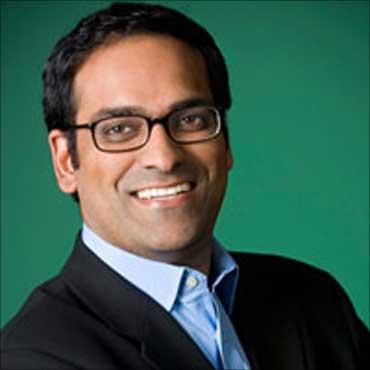The mobile will change the Internet'
'The mobile will change the Internet'
'The mobile will change the Internet'
Last updated on: May 14, 2010 11:57 IST

370)this.width=370">
in New Delhi
Shailesh Rao heads the India arm of a company that is synonymous with the growth of the Internet - Google.
The question, however, is what the $23 billion Google can do in India. Can it make money from its popularity in a country where Internet penetration itself is 10 per cent that of TV or about one-fifth that of print? For decades to come, India will remain a mass media market.
Newspapers alone reach about 340-odd million people. TV reaches a gargantuan 670 million people, and the numbers are still growing. The impact of the Internet on media consumption hasn't been felt as acutely in this market simply because it opened up to media only after 1992.
Unlike the US or Europe, which were fully satiated mass media markets when the Web happened in 1995, India has just begun discovering the joys of private television, radio and lots of newspapers. The Internet is still on the periphery of media consumption. Business Standard spoke to Rao on the future of the Internet in India. Excerpts:
The Internet has a depth, width and a textural quality that is different from other media. Yet, it operates much like mass media - it needs audiences and advertisers. Is the fuss over the Internet justified?
It is justified. What the Net represents is a standards-based platform for communication, collaboration, commercial transaction and content generation. So, it is a multi-dimensional media. It is a grand experiment with the power and implications of a standards-based open network.
Most other media or consumer networks are proprietary. The Net is truly global and open. It has reduced the cost at which the content is generated and has increased the breadth of the content generated.
For example, every minute, 24 hours of content is being loaded onto YouTube. The Net has democratised access, and created a world based on merit and performance.
Click on NEXT to read more...
Image: Shailesh Rao, managing director, Google India.

370)this.width=370">
If aggregation is the way to make money on the Net (a la Google), what happens to the original content? Eventually, even the aggregators make money only on popular content produced by professionals. The long tail doesn't really deliver value...
The long tail is by definition a tail. It is a collection of niche properties. Tail content providers cannot have a bigger audience than the head providers. In the early nineties, India had just Doordarshan; with liberalisation came more channels.
Think of the Net as the logical next stage of that phenomenon - it reduces cost of entry and production. The fact is that people have more choice.
Search counter-acts what you are saying too, because you can find what is relevant. If a website has no value, it won't show up.
But the websites on the top of search results may be there because of Search Engine Optimisation (SEO)...
I would like to think that all the signals in our search engine algorithm are designed to find the most relevant sites. Most of our engineering is focused on search.
Ultimately, we wouldn't be successful if we were not relevant. Nothing compels people to come back to Google.
 370)this.width=370">
370)this.width=370"> 370)this.width=370">
370)this.width=370">
No comments:
Post a Comment